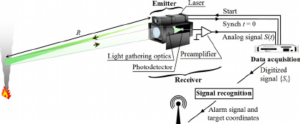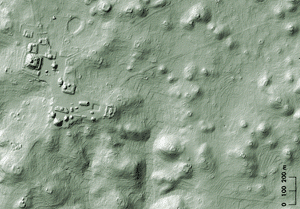The term genetically modified organism is one that is widely used and also widely misunderstood. Most people imagine a brand-new technology that creates mutant animals and giant monstrous foods like in Cloudy with a Chance of Meatballs. In reality, it is but a sophisticated name for something humans have practiced for thousands of years. Every food item we consume is not fully natural or GMO-free because of the way we create and sustain our food source. One of the main problems is the stigma against the actual term GMO and the fact that it is so difficult to define. It has become so controversial that it has fueled social justice causes and has inspired movements, such as the Non-GMO Project.
According to the Non-GMO Project, a GMO is a “plant, animal, microorganism or other organisms whose genetic makeup has been modified in a laboratory using genetic engineering or transgenic technology” (Non-GMO Project 2016). They then argue that this modification “creates combinations of plant, animal, bacterial and virus genes that do not occur in nature or through traditional crossbreeding methods” (Non-GMO Project 2016). This organization specifically defines GMOs as created in a laboratory and does not acknowledge other techniques such as selective breeding. The Non-GMO Project’s mission is to raise awareness and to preserve sources of non-GMO products. They believe that in order to create a safe, healthy food supply for future generations, “The integrity of our diverse genetic inheritance is essential to human and environmental health and ecological harmony” (Non-GMO Project 2016). Although it is understandable that people want to have “natural,” safe, and healthy foods, the benefits of genetically modified organisms must also be appreciated, especially in the field of social justice.

https://www.google.com/url?sa=i&source=images&cd=&cad=rja&uact=8&ved=2ahUKEwjYr_aSst_eAhUEZN8KHVnbAL8QjRx6BAgBEAU&url=https%3A%2F%2Fmonsanto.pr%2Fvegetables-in-action-corn%2F&psig=AOvVaw0aNjQgdluhnTnyHNJ-pHSV&ust=1542680308494308
The Banana Xanthomonas Wilt, or BXW, is a bacterial disease that is considered to be one of the “greatest threats to banana productivity and food security in Uganda and eastern Africa” (Senapathy 2017). With the addition of a gene from pepper, a resistance to banana wilt was introduced, until the anti-GMO movement stifled its success (Senapathy 2017. Nobel Laureate Sir Richard Roberts argues that “we need to make sure that we in the developed world understand that it is an indulgence for us to be either for or against a particular food” (Senapathy 2017).

Symptoms for Banana Xanthomonas Wilt https://www.google.com/url?sa=i&source=images&cd=&cad=rja&uact=8&ved=2ahUKEwjwxOrpst_eAhUQmuAKHdi0CDsQjRx6BAgBEAU&url=https%3A%2F%2Fwww.researchgate.net%2Ffigure%2FSymptoms-of-Xanthomonas-wilt-disease-A-Banana-plantation-damaged-by-wilt-B-Yellow_fig1_228376000&psig=AOvVaw1LAQT4R0-Yw2K3L6JeIggn&ust=1542680491439645
The terms selective breeding and artificial selection were coined by Charles Darwin. They are not specifically considered to be strictly GMOs in the modern definition but are still the ancestors to our current genetic modification. The earliest evidence of artificial plant selection “dates back to 7800 BCE in archaeological sites found in southwest Asia in wheat” (Rangel 2016). In addition, according to the United Nations, by 2050 humans will need to make 70% more food than we currently do to simply adequately feed the world’s population (Rangel). As these problems rise up and meet the negative aspects of increasing production of GMOS, In short, we must be conscious of our reasons for being against GMOS and determine whether the benefits outweigh the consequences.
Sources
Gabriel Rangel. “From Corgis to Corn: A Brief Look at the Long History of GMO Technology.” From Corgis to Corn: A Brief Look at the Long History of GMO Technology, Harvard University, 23 Oct. 2016, sitn.hms.harvard.edu/flash/2015/from-corgis-to-corn-a-brief-look-at-the-long-history-of-gmo-technology/.
“Non-GMO Project: Most Trusted Seal.” Non-GMO Project, The Non-GMO Project, 2016, www.nongmoproject.org/.
Senapathy, Kavin. “The Anti-GMO Movement Has A Social Justice Problem.” Forbes, Forbes Magazine, 20 Nov. 2017, www.forbes.com/sites/kavinsenapathy/2017/11/20/the-anti-gmo-movement-has-a-social-justice-problem/#439c3733a542.


